Cat Drool: Cool or Concerning?
Posted: 11/06/2023 | BY: Erin Cain | Categories: Uncategorized
Do you know why some cats drool? It’s when a cat salivates excessively, and it can be a sign of several different health concerns. This article will discuss the various reasons why cats drool and what it might mean for their health. If your cat is drooling more than usual, it’s essential to take them to the vet to find the source of the problem.
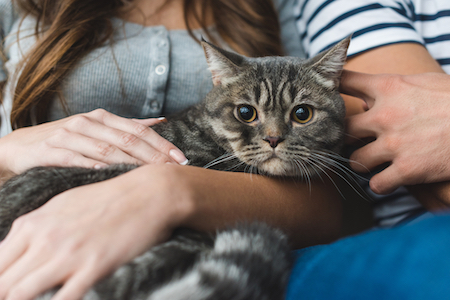
What causes normal cat drooling?
There are times when cats drooling is perfectly normal behavior. It is not uncommon for some cats to drool while kneading or purring as a sign of contentment and pleasure. Cat drooling can be traced back to a cat’s kittenhood when kittens stimulate their mother’s milk release by kneading their paws against their mother’s teats. This action gives kittens the nutrients they need and strengthens the bond between the mother cat and her babies.
A happy cat may knead on or near their person and drool as a sign of their contentedness. When your cat purrs and “makes biscuits” in your lap, some cat drooling may occur. This is one way your kitty shows his love for you.
Some felines will drool at the sight or smell of food, but this generally doesn’t cause concern. Your kitty’s saliva is flowing more than usual when they see or smell something edible nearby. This habit is nothing to worry about unless your cat frequently drools in other areas of his life.
Fear or stress and anxiety may cause a cat to drool temporarily. Kitties are especially susceptible to stress during car rides, which often cause motion sickness. The pressure of vet visits often prompts temporary drooling in kitties when they feel trapped in a strange place outside their territory. Drooling or vomiting may happen on these occasions. Still, unless your cat is drooling in non-stressful situations, you don’t need to be concerned about excessive saliva.
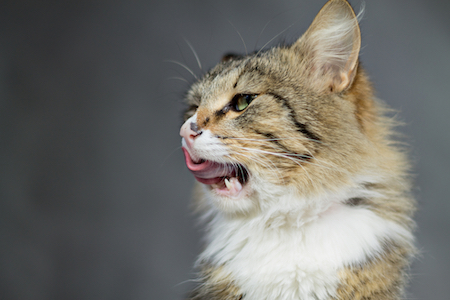
What causes abnormal drooling in cats?
Your cat may have a health problem if their drooling is constant and cannot be associated with happiness or food. All cats should visit the vet regularly for routine wellness exams, even though they seem healthy. Preventive care can find illnesses and diseases early enough to treat the medical issue effectively, and it saves your cat a lot of discomfort, pain, and stress.
These are the most common causes of drooling in felines:
Oral and dental disease
The most common cause for excess drooling in cats is oral and dental disease. Cats can develop various unnoticed issues until they cause extreme illness or pain, which often leads to excessive drooling. The source of this pain is often infection, mouth ulcers, lesions, tooth injuries, tooth decay, and gum disease. Dental and mouth diseases should be diagnosed and treated as quickly as possible. These illnesses often lead to other potentially fatal medical conditions.
In some cases, a cat’s drooling may result from oral cancer. Felines can develop cancer from the tip of the tongue all way down to the back molars and throat. These cancers result in excessive drooling and immediately require a vet’s attention.
Foreign objects
If you notice drool coming out of your cat’s mouth, it could be because he has something stuck in there. The most common foreign body ingested by cats is a piece of string. Still, other possibilities include grass, fish bones, household items, or even toys or toy parts. Cats are curious animals, and sometimes they find themselves playing with objects that should not be played with. One such example is swallowing small metal items like blades or sewing needles, which can result in esophageal obstruction.
Never try to remove anything from your cat’s mouth on your own! If you find something in your cat’s teeth, always take him straight to a licensed veterinarian to evaluate and remove the object.
Mouth trauma
Another cause of excessive drooling in felines is oral trauma. Cats struck by cars may suffer mouth damage that causes drooling. Kitties who chew on electrical cords and are burned suffer from mouth trauma, which causes them to drool more than usual. Suppose you have multiple kitties or a cat who goes outside. In that case, they may get into fights with other felines and wildlife that lead to mouth injuries, and thus, more drooling in response to damage and pain.
In instances of oral issues, it’s best to get your cat to a veterinarian as soon as possible.
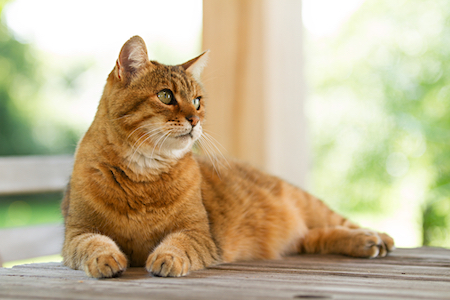
Exposure to toxins
Cats are naturally curious, one trait about them that we love most. Unfortunately, curiosity can sometimes cause serious health problems. If your cat is drooling suddenly, it may be that he has ingested something toxic to his body. Toxic foods, household cleaners, and chemicals are attractive to kitties, and ingestion of any of these elements will lead to excess drooling, amongst other symptoms. Poisonous plants, like lilies, are also alluring to felines, and a small bite can lead to a physical reaction, including drooling.
Some toxins, such as pesticides or flea and tick preventatives meant for dogs and not cats can cause drooling. If your cat has eaten something dangerous, get him immediate veterinarian care because treatments are available.
Nausea
If your cat is nauseous or has been vomiting, he will likely drool a lot. There can be many different causes for nausea in cats, including gastrointestinal issues, kidney disease, and internal parasites. Cats who continually vomit should see a veterinarian right away, especially if they have a poor or complete lack of appetite.
Upper respiratory infections
Cats are often afflicted with various ailments, including those that affect their upper respiratory systems. Excess drooling usually occurs in cats with nose, throat, or sinus infections. Drooling is often accompanied by other symptoms, such as sneezing, mouth and eye ulcers, squinting, and discharge from the eyes and nose. Additional signs of a URI include red and puffy eyes, depression, and decreased appetite.
Cats who live in unclean environments or are exposed to chronic stress have weakened immune systems, making them more susceptible to upper respiratory infection (URI). If your cat is drooling and displays other signs like a lack of appetite or extreme lethargy, then it might be due to illness, so make sure you call the vet promptly.
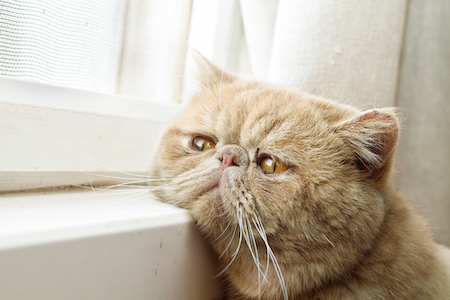
Be safe, not sorry.
What is the difference between normal and abnormal drooling in cats? And how can a cat parent know when drooling is a sign of an emergency? The best bet is to err on the side of caution and be safe rather than sorry.
Cats are experts at hiding illness, so please contact a veterinarian if you notice that your cat started drooling for no apparent reason. Cats often do not show signs of disease until they feel very sick. When in doubt, don’t wait! Call the vet right before the symptoms progress, and your cat faces severe illness. Early detection can be the difference between life and death for a cat.
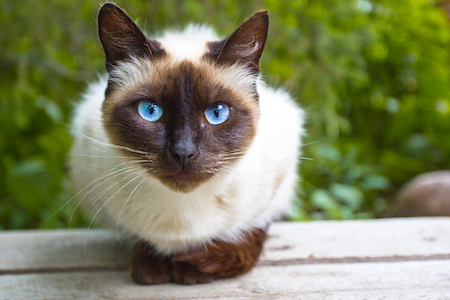
Vet bills are expensive. Let pet insurance help.
As pet parents, our responsibility to our furkids is to provide them the healthiest life possible. When accidents or sickness happen, we need to take our pets to a pet hospital for veterinary advice, treatment, and supportive care. Unfortunately, those vet visits really add up in price, causing some pet parents to choose not to take their pet for medical attention because of financial limits. A pet insurance plan for your cat or dog can eliminate that concern. Pet health insurance plans reimburse pet owners those vet costs between 70 – 90%, depending on the type of coverage you choose.
At Pet Insurance Review, we find the best cat and dog health insurance plans from the top insurance providers in the country. Start with your free quote, and find out how affordable pet insurance can be and how much it can help you and your furkid in the future.
References:
1. Blue Cross for Pets. (n.d.), Why do cats knead? Retrieved from https://www.bluecross.org.uk/advice/cat/why-do-cats-knead
2. Coleman, K. (2020). 14 Surprising Ways Your Cat Shows Affection. Retrieved from https://bestlifeonline.com/ways-cats-show-affection/
3. The Ohio State University College of Veterinary Medicine. (n.d.). Life Stressors of Cats: How to Make Your Cat More Comfortable When Stress Occurs. Retrieved from https://indoorpet.osu.edu/cats/feline-life-stressors
4. Cornell University College of Veterinary Medicine. (n.d.). Feline Dental Disease. Retrieved from https://www.vet.cornell.edu/departments-centers-and-institutes/cornell-feline-health-center/health-information/feline-health-topics/feline-dental-disease
5. International Cat Care. (2020). Keeping Cats Safe: Cats and foreign bodies. Retrieved from https://www.vet.cornell.edu/departments-centers-and-institutes/cornell-feline-health-center/health-information/feline-health-topics/feline-dental-disease
6. Gracis, M. (2015). Oral and Maxillofacial Trauma in Cats. Retrieved from https://www.vin.com/apputil/content/defaultadv1.aspx?id=7259188&pid=14365&
7. Gould, W. (2022). 20 Plants Poisonous to Cats. Retrieved from https://www.rd.com/list/houseplants-cat-owners-should-avoid/
8. Primovic, D. (2021). Symptoms and Causes of Cat Nausea. Retrieved from https://www.petplace.com/article/cats/pet-health/cat-health/symptoms-and-causes-of-nausea-in-cats/
9. Brooks, W. (2020). Upper Respiratory Infection in Cats. Retrieved from https://veterinarypartner.vin.com/default.aspx?pid=19239&id=4951489
DisclaimerThe information contained on this blog is intended for informational and educational purposes only and should not be construed as medical advice. It is not a substitute for professional veterinary care. Always consult with your veterinarian before making any changes to your pet's health care or treatment plan.
The authors of this blog are not veterinarians and do not claim to be experts in pet health. The information provided here is based on our own experiences and research, as well as information from reputable sources. However, we cannot guarantee the accuracy or completeness of this information.
We encourage you to do your own research and consult with your veterinarian before making any decisions about your pet's health.
Compare top pet insurance providers & plans.
Enter your dog’s age in years and months to calculate their age equivalent to human years.
Calculate your dog’s ageEnter your cat’s age in years and months to calculate their age equivalent to human years.
Calculate your cat’s age